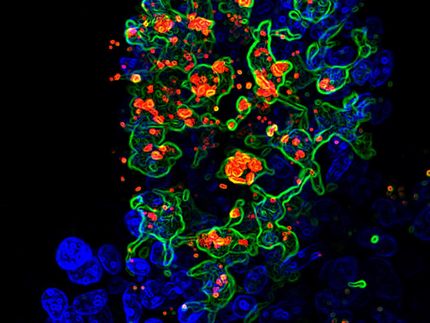BioAlliance announces improved anti-fungal drug exposure publication
Advertisement
Paris. BioAlliance Pharma announced that a research team, including the company, reported results demonstrating the potential superiority of a new formulation of miconazole administered as a bioadhesive extended release buccal tablet compared to the same drug applied in a topical gel for treatment of oropharyngeal candidiasis, an oral fungus commonly known as "thrush".
The research team came from the Biopharmaceutics department, Faculty of Pharmacy, University of Clermont-Ferrand, France, and BioAlliance Pharma. The study was reported in the/ British Journal of Clinical Pharmacology/ (Vol. 58, 2004).
"This study of our once a day topical formulation of miconazole in the form of a an extended release bioadhesive buccal tablet played a key role in our decision to proceed with further clinical development of this first product utilizing the Lauriad drug delivery platform," said Dominique Costantini, M.D., president and CEO of BioAlliance Pharma. "The two completed Phase 3 trials in the EU and the planned Phase 3 trial in the US are designed to demonstrate the superiority of this approach in the treatment of oropharyngeal candidiasis commonly found in immune compromised patients, including HIV and cancer patients, diabetics and the elderly."
While current treatment guidelines for oropharyngeal candidiasis call for use of topical or localized therapies whenever possible, currently available gels, lozenges and mouthwashes have been generally unsuccessful in treating this infection. This is due to their multiple daily applications, unpleasant taste and transient drug concentration in the oral cavity. The lack of effective local treatments has lead to preferential use of systemic anti-fungal agents.
In order to provide a first-line alternative to treatment using systemic therapies, the current study was designed to demonstrate the potential of a once daily application of a buccal tablet formulated to provide an extended release of miconazole. Miconazole is a well-known antifungal with broad-spectrum activity against various species of/ Candida/. Such an approach would eliminate the problems of patient compliance and tolerance associated with other topical treatments. At the same time, it would increase the likelihood of therapeutic success through prolonged exposure to miconazole in the oral cavity at a level sufficient to effectively eradicate the Candida and avoid the drug-drug interactions and development of microbiological resistance frequently associated with systemic therapy.
The study was conducted using a proprietary bioadhesive buccal tablet (Lauriad(R)) placed on the/ cuspid fossa/ beneath the upper lip. This placement allows the tablet to adhere to the buccal mucosa for an extended period while releasing the antifungal agent. A natural polymer, extensively used in the food industry, with good tolerance and appropriate adhesive properties was used to formulate the drug. The tablet adheres to the gum and then absorbs water, which triggers sustained release of miconazole and tablet erosion. Once the tablet is in place, patients can eat, drink and carry on normal daily activities while the tablet dissolves, slowly or gradually releasing the drug.
In the study, plasma and salivary measurements of miconazole were assessed in 18 healthy subjects over a 24-hour period. In all subjects, the single administration of a 50 mg tablet of miconazole Lauriad(R) gave higher and more prolonged salivary concentrations of the drug than did the gel. A 100 mg tablet was also tested in the study but the 50 mg tablet demonstrated better tolerance and acceptability, primarily due to its smaller size. The mean duration of tablet adhesion was 15 hours.
Mean salivary concentration was consistently 18.9 times greater when compared to a commonly used miconazole gel administered 3 times over a 12-hour period for a total dose of 375 mg -- 7.5 times higher than the Lauriad' 50 mg tablet. The mean time that salivary concentrations of miconazole were above the minimal inhibitory concentration level needed to treat the infection was 7 hours for the tablet compared with 1.5 hours for the oral gel.
Plasma miconazole concentrations were generally below the limit of detection, confirming a very low absorption through the buccal mucosa or the gastrointestinal tract after swallowing saliva.
"Data from the study strongly support the further development of miconazole Lauriad' 50 mg bioadhesive buccal tablets as an extended release formulation leading to improved antifungal exposure in the oral cavity," said Professor Jean-Marc Aiache, Emeritus Professor, Biopharmaceutics Department, Faculty of Pharmacy, University of Clermont-Ferrand, France, and inventor of the Lauriad' technology.
"A single daily application with a low dose of miconazole could improve patient compliance and might also diminish drug-drug interaction, supporting the safety profile of the miconazole Lauriad' tablet in the Phase III studies," said Professor Jean-Michel Cardot, Department Head, Biopharmaceutics Department, Faculty of Pharmacy, University of Clermont-Ferrand, France, an investigator on the study.




















































